Resources
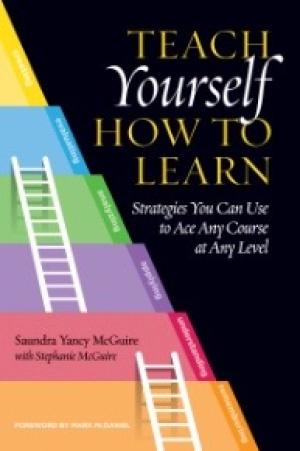
The word “magic” appears several times in this book for students on how to succeed in college and university courses. Co-authored by Saundra McGuire, director emerita of the nationally acclaimed Center for Academic Success at Louisiana State University, and her daughter Stephanie McGuire, the volume is laced with stories of seemingly “magical” immediate and dramatic improvement in student performance after the application of the learning strategies described here in ten short chapters. The metacognitive learning strategies described draw on Bloom’s taxonomy and the neuroscience of learning, such as the work of Mark McDaniel (Make It Stick, 2014). They include strategies on reading textbooks, taking notes in class, reviewing, doing homework assignments, time management, and studying for and writing tests and exams. A handy little learning strategies inventory in Appendix C allows students to “predict” their grades based on the strategies they use. More important than these specific learning strategies for this reviewer are the sections of the book devoted to fostering in students a growth mindset that challenges the deterministic view that intelligence is innate (“I’m just not good at math”), and encourages students instead to believe that they can succeed and motivates them emotionally to do the effective work necessary for success. Monitoring self-talk and attributing results to one’s actions rather than external factors are powerful mental tools for improvement. In order to succeed, however, students need more than just a belief that they can do it and a set of effective strategies; they also need to know as specifically as possible what is expected of them. This is where this book addresses not just students but also instructors. Instructors put obstacles in the way of student success by not clearly articulating their expectations (and by creating unsupportive and discouraging classroom experiences and course structures). The book includes a very helpful section in chapter seven on how students should read a course syllabus. Notably, if a syllabus does not seem to clearly lay out expectations, students are encouraged to meet with the instructor for clarification. In fact, one of the strategies is to make regular use of instructor office hours. The book promises that if students use these strategies they can “ace” any course. Will students be disappointed? While the results may be magical, the method is not – hard work using effective strategies is required. Even reading the book may be a stretch for some students, although it is short and largely written in a very accessible style. It will also likely profit students in sciences and technology, where memorization is important, more than those in the humanities, such as religion and theology majors. The book does very little to address strategies for successful research and writing of papers, for instance, and the anecdotes of student success are drawn overwhelmingly from the sciences. However, much can be gained from this book by both students and instructors in all fields. My biggest take-away is the author’s insistence, “Now hear this: All students are capable of excelling” (65). This book shows how.
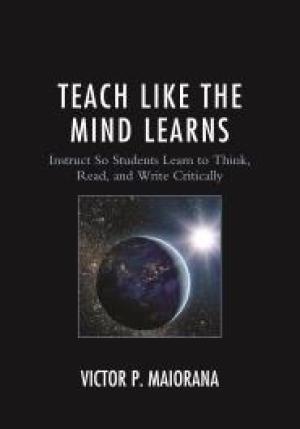
This volume is the most recent of a triumvirate of interrelated works Maiorana has recently published. Teach Like the Mind Learns builds off Fixing Instruction: Resolving Major Issues with a Core Body of Critical Knowledge for Critical Instruction (2015) and Preparation for Critical Instruction: How to Explain Subject Matter While Teaching All Learners to Think, Read, and Write Critically (2016). Maiorana’s larger project is an ambitious one. He takes aim, with broad brushstrokes, at rote-learning styles of instruction, a specter he calls “serialism” and describes as the “teaching profession’s weak default instructional strategy” (4). He contends that this pervasive style inhibits “our innate ability to think critically” (155). As an antidote, Maiorana offers his own unique instructional framework. He argues that subject matter is universal and critical in nature across disciplines. He also argues that one can teach how the mind learns, and as a result, promote teaching that gets students to write, speak, and observe critically. One can do this by utilizing “mind grammar,” which he defines as the “innate, systematic, and patterned way that the human mind encounters the world and all its subject matter” (6), At the core of mind grammar instructional techniques are what he calls “subject matter displays.” Much of the practical approach involves formal concept mapping and displaying the explanation of a certain term or concept with related activities. The book unfolds in two main parts: part one provides an overview of Maiorana’s theoretical basis for critical instruction, and part two offers numerous examples of activities and instruction sets using this framework. Teach Like the Mind Learns is a tough nut to crack. This is largely because it is a closed intellectual loop. The only other instructional literature Maiorana cites in footnotes and references in passing are his own two earlier works on the topic. He even instructs the reader to purchase his previous books so one can better follow the self-referential citations that abound in each chapter. The first-time reader must further master Maiorana’a distinctive vocabulary, from mind grammar to “Itechniques” and “Imethods.” Consequently, the learning curve for reading Teach Like the Mind Learns is steep. It is largely predicated on the assumption that the reader has read and embraced Maiorana's earlier works. There are some helpful insights throughout, including the example teaching exercises that make up the second half of the book. But as Maiorana’s approach avoids engaging with any other instructional literature beyond his own, it is ultimately not clear how one might use this approach in combination with other pedagogical styles and resources to improve classroom instruction. Further, he suggests a remarkable universality to his framework, regardless of specific context – from elementary through college-level instruction – a bold one-size-fits-all approach. In a world of opportunity costs, limited time, and limited energy, someone looking to explore “how the mind learns” would be much better off diving into the established science of learning literature. There are numerous accessible works on its foundations and praxis, and several that are specifically about improving instruction at the college level, such as James Lang’s Small Teaching (San Francisco: Jossey-Bass, 2016) and Donelson Forsyth’s College Teaching (Washington, D.C.: American Psychological Association, 2016).
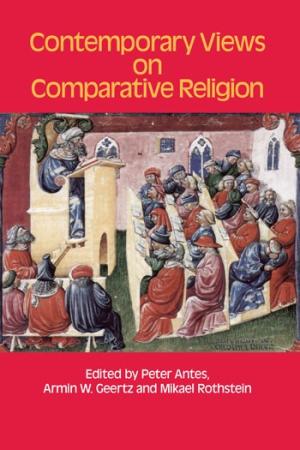
During his time on the editorial board of Teaching Theology and Religion Tim Jensen brought a distinctive, and often provocative, sensibility to that group’s discussions. Rooted in his own experience as a teacher in secondary schools and in universities, and based on his research into systems of “religion education” both in Denmark and throughout Europe, Jensen’s position vigorously argued for a strictly secular (and scientific) study of religions throughout the educational curriculum. Even when they did not carry the day, Jensen’s arguments were always “good to think with.” Although they do not focus as directly on Jensen’s teaching as they do on many of Jensen’s essays (the volume includes a bibliography of his writings), these essays honoring Jensen on the occasion of his sixty-fifth birthday address many of his persistent concerns. As an ensemble, the essays present a vision of the field of the study of religion that will challenge teachers in North America to articulate their own understandings of what the study of religion entails. More importantly for this context, several of the essays link their broad considerations of the study of religion directly to issues concerning teaching. Gustavo Benavides offers an essay that stands out in linking theoretical concerns to the classroom. He argues that whatever the subject matter may have been, at the end of the term students in any course in the study of religion “will have thought, however intermittently, about the various but nevertheless recurrent ways in which what we call ‘religion’ is generated and kept in place” (223). Beyond that broad learning goal he proposes – convincingly in my view – that “Ideally, anyone teaching a course that has to do with any of the aspects of what is generally known as ‘religion’ should be engaged in the elaboration of a theory that could accommodate – however provisionally, however tentatively – most of the topics being discussed in any given class” (225). Benavides shows clearly how conceptions of what is – and should be – involved in the study of religion is not simply the concern of a handful of scholars specializing in “theory and methods.” One’s conception of the nature and purpose of the field has a direct and pervasive impact in the classroom. Several other contributors propose interesting links between their scholarly concerns and their practice as teachers. Russell McCutcheon discusses his use of popular music videos “to illustrate the unexpected appearance of religion” (157) where it is least expected. Drawing on a thorough reading of Jensen’s own work, Wanda Alberts carefully maps out not only what “Religious Studies-based Religion Education” looks like in K-12 curricula but also how it contrasts to other, more confessional, understandings of “Religious Education” and what is at stake in the competing understandings. Satoko Fujiwara provides a persuasive account of why the “world religions” paradigm has persisted in Japanese education, linking it to a particularly Japanese understanding of Max Weber. Though this volume does not focus directly on teaching, it nonetheless provides the interested reader with both some very pointed suggestions about classroom practice and an array of essays about the state of the field that will provoke and perhaps even inspire careful rethinking about what we are teaching when we teach about religion.
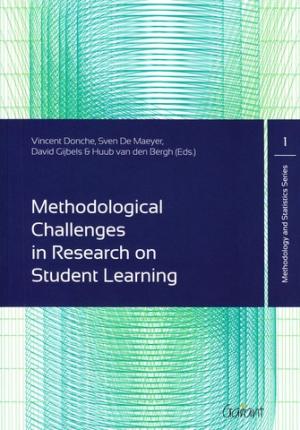
The central aim of this edited monograph is to present new techniques for dealing with methodological challenges to sociological research on student learning. The book is organized into a brief preface, seven chapters that each deal with distinct methodological approaches to student learning research, and an eighth chapter that provides an outline for how the preceding chapters can be applied to or help shape future research. Each chapter presents various solutions to distinct methodological challenges through concrete case studies. Chapter one provides an overview and case study of how structural equation modeling (SEM) can be used to conduct empirical research that tests hypothesized influences on student learning. The authors contend that previous research has not been able to fully address the complex multi-variable character of students’ approaches to learning. The strength of SEM is not only its ability to test for multiple variables such as these, but also to examine the pattern and strength of the relationships between these variables. Chapter two explores challenges to research on students in dual programs composed of both university classes and internships. The goal of such research is to take into account the different perspectives, discourses, and research instruments (for example, focused in-depth research and large scale qualitative research) used to study dual program student learning, including workplace learning and the transitions between contexts of learning, learning in higher education and its specific learning activities and patterns, and longitudinal professional development. To study such complexity, the authors propose the use of multilevel analysis for dealing with nested data and methodological triangulation for testing the use of the multiple research instruments. Chapter three outlines a method for using neural network analysis techniques for assessing the predictability of how much influence cognition, motivation, and learning approaches have on academic performance. Chapter four provides a model for addressing the failure of previous research to address implicit preferences for specific types of learning environments by using conjoint analysis, a method developed and employed in marketing research. Chapter five proposes exploratory-grounded research as a way of developing theories rather than solely testing them. The first case study provided in this chapter analyzes data from semi-structured interviews on students’ motivational orientation through various processes for identifying, verifying, and revising themes in the data. The second study then analyzes another set of interviews using the categories developed from the first study. A strength of this approach is its ability to develop innovative theories that are not limited to any pre-established or hypothesized number of categories. Chapter six addresses emotional dimensions and their measurement in research on teacher education. In addition to providing a thorough rationale, outline of theoretical perspectives, overview of the phenomenological method in social science research, identifying themes in the data, and discussing methodological challenges, the chapter provides a helpful survey in the form of a table of previous research articles that address emotional dimensions. Chapter seven explores challenges to longitudinal studies and provides a model and short list of best practices. Though interesting conclusions and/or corroboration and challenges to previous theories regarding student learning are discussed throughout the book’s varied chapters, the overarching focus is indeed on methodological challenges and proposed solutions to these.
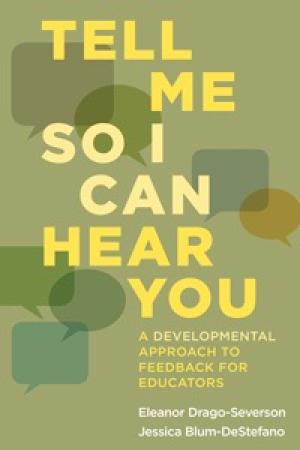
The question, “Can you give me some feedback on this,” is incredibly problematic. It is what some leadership theorists call a “landmine question.” Giving constructive feedback can be a tricky wicket. We may call feedback “honest.” However, it almost always comes across as critical, perhaps even mean. The idea is to focus on the negatives or how others can improve themselves, so we address it in what I call a “combatively collaborative” fashion. However, because of the possibly aggressive or even bullish nature of the one giving the feedback, it can have the reverse effect. Tell Me So I Can Hear You is a helpful volume for educators and leaders. Rooted in the cognitive-developmental theory of human development as espoused by Robert Kegan, the authors base their entire argument firmly in the “four ways of knowing – instrumental, socializing, self-authoring, and self-transforming” (40). The authors convincingly argue that feedback to colleagues and peers works best when it is understood to be part of the continuing education or professional development process. For them, this results in primarily offering feedback in a way connects with our learning styles. For example, if you are an instrumental learner, you will focus on offering feedback that adheres to the rules, regulations, and expectations of an employee of that organization. Since this approach relies heavily on rubrics, it will positively help colleagues understand where they stand professionally, based on the commonly-accepted careerist markers. However, it does not take into account more abstract qualities, such as emotional health, creativity, or one’s personal background. Those in administrative educational leadership often offer constructive or critical feedback and tend to process feedback differently than the faculty colleagues and students who are recipients of that feedback. The one receiving feedback may become confused, angry, or withdrawn because they interpret the administrator’s comments differently than the intended meaning. The benefits of this volume are in the consistent and thorough explanation of the “four ways of learning,” as the authors ground their entire discussion on showing how these ways of learning can work together through feedback settings to build a healthy and collaborative environment. To this end, the chapters on how we receive feedback (chapter 4), give feedback (chapter 5), and build a culture of trust in the organization (chapter 6) are certainly worth the price of the book. The reader should, however, be aware of two minor concerns: First, this volume accepts Common Core Standards as its operating model for understanding competency rather than seeking out a more integrated model of content comprehension and skills application. Second, the authors seem to interchange the concepts of “colleague” and “adult learner,” which causes some confusion as to whether this handbook is for the quad office or the adult-learning classroom. If you find yourself being required to offer more and more intense feedback or are in a leadership position, read Henry Cloud’s extremely practical volume Necessary Endings (New York: HarperBusiness, 2011) before diving into this volume.
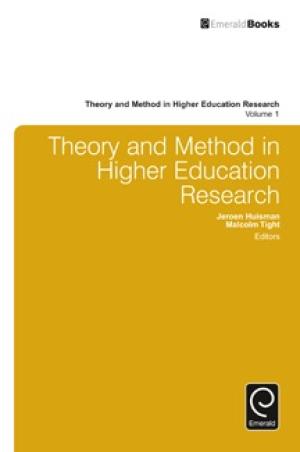
The first volume of Theory and Method in Higher Education Research, editedby Jeroen Huisman and Malcolm Tight, is an important contribution to the body of pedagogical literature. The volume focuses on researchers’ engagement with theory and contemporary utilization of methods in educational research. Generally, the book highlights contemporary theories and offers summaries pertaining to innovative methods in educational research. This is the first volume of a series that will attend to theoretical perspectives and methodological approaches for researchers. With fifteen chapters from a diverse group of international scholars, the book is a potential handbook for researchers to strengthen their research designs, methods, and analyses. In the first chapter, Yuzhao Cai and Yohannes Mehari provide a review of how institutional theory has been studied and applied in higher education research. Andrew Gunn, in the second chapter, argues that political factors, theories, and concepts from the field of political science can be applied to higher education policy analysis and matters related to the association between universities and the state. Next, Murray Saunders, Christina Sin, and Steven Dempster utilize a case study from Scottish higher education to describe the use of evaluation theory in policy research and methodologies. In a subsequent chapter, T. Austin Lacy describes a useful analytical tool for longitudinal studies, namely event history analysis, and offers a practical application for higher education. In the following chapter, Matthias Klumpp discusses the theoretical perspectives that can help stakeholders understand and measure performance and efficiency in higher education. In the sixth chapter, Mareike Landmann, Emilia Kmiotek-Meier, Daniel Lachmann and Jennifer Lorenz discuss reliability and validity in competence scales in graduate surveys. Brett Bligh and Michelle Flood’s contribution to the book is an illustration of the application of Change Laboratory theory to higher education research methodology. In the next chapter, Lynn Clouder and Virgina King present a case for further engagement with Appreciative Inquiry in higher education research. Erika Lofstrom, Anne Nevgi, Elisabeth Wegner, and Mari Karm offer a valuable explanation of how images may be utilized in research methods in the following chapter. Neville Clement, Terence Lovat, Allyson Holbrook, Margaret Kiley, Sid Bourke, Brian Patridge, Sue Starfield, Hedy Fairbairn, and Dennis M. McInerney wrote the next chapter that conceptualizes judgment, epistemic cognition and the quality of doctoral examinations. The following chapter, written by Megan Y.C.A. Kek and Sara Hammer, presents a meta-analysis centering on academic development research.The next chapters describe the application of important theories to higher education: Two-Dimensional Participatory Theory (Andrew Morrison) and capability approach (Ana Sofia Ribeiro). The final two chapters focus on qualitative approaches in higher education. Peter Gibbings, John Lidstone, and Christine Bruce offer a discussion about presenting phenomenographic research to technology-based audiences and Antonio Magalhaes and Amelia Veiga describe the utilization of the narrative approach in higher education research. Theory and Method in Higher Education Research: Volume 1 is a must have for anyone with an interest in contemporary theoretical perspectives, epistemological advancement, and methodological approaches in higher education research.
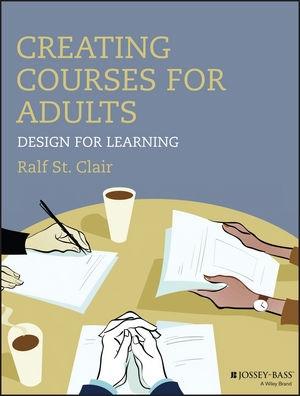
Ralf St. Clair’s instructive book on designing courses will provide helpful guidance to new professors and a meaningful review to those seasoned in the classroom, along with some potentially new material for those veterans. Divided into ten well-defined chapters, Creating Courses for Adults walks readers through the learning theory associated with the adult student population, as well as the practical logistics of designing different kinds of courses for different adult populations. The array of courses discussed range from online for credit instruction to non-credit onsite education for trade school students. Taking seriously the role and the needs of the professor and not just the students, St. Clair begins with a welcomed and affirming chapter, “All About You,” which includes a very helpful section entitled, “Why Who You Are and What You’ve Done Matters.” While this book accepts that teaching is about the students, the author accepts the often unappreciated fact that teaching is also about the needs of the professors, who feel a sense of vocation to this work. St. Clair operates out of the helpful notion that “nobody is an intuitive or completely natural teacher” (page xii), a claim that will challenge seasoned instructors to continue to plan and will encourage new professors with their often unarticulated sense of intimidation. Several chapters are especially rich in what they provide the planning process. Chapter three, “Context Drives Design,” makes distinctions among formal learning, non-formal learning, and informal learning. Adult learners may bring previous experience in formal learning to the classroom, since formal learning is education that leads to a diploma or certificate. They will certainly bring experience in non-formal learning, such as that experienced in an open-ended group, and informal learning, which refers to learning achieved through everyday activities. In fact, the latter two learning experiences can so shape the approach to education of adult learners that it becomes difficult for them to embrace a world of formal learning, even if it is adult-education friendly. For this reason, teachers must give some thought in course design to preparing students for the particular educational context that the course provides. St. Clair also offers helpful approaches to online learning. In addition to a useful bibliography of online course design material, St. Clair proposes that design issues in online education do not fundamentally differ from onsite education. Citing current literature that explains online course design, St. Clair concludes that the best literature provides questions for online course design that do not substantially differ from face-to-face education. While acknowledging that his conclusion will not be universally accepted, St. Clair nonetheless provides an affirmation that online education can be informed by the same theoretical approaches that guide other forms of education. Readers wanting an accessible approach to course design, grounded in both theory and application, will find St. Clair’s Creating Courses for Adults to be valuable. The book belongs in the collection of any teaching and learning center of higher education for its content and its current bibliography.
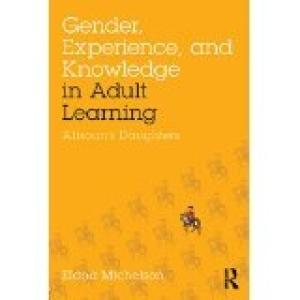
Institutions of higher education can treat the life experiences of adult learners as raw student material – material that requires expert educators to transform it into knowledge. Elana Michelson questions hegemonic tendencies in higher education that often perpetuate dualism of mind versus body as well as dismissive attitudes about the value of embodied knowledge. Her argument that “professional discourse concerning experiential learning remains rooted in the disembodied Enlightenment knower” rings true in theological education as well as other areas of scholarship (38). When claims of knowledge need to be authorized in some way, the process of authorization is always embedded in power relationships. Michelson elucidates these relationships through her examination of institutional assessment of life experience for academic credit. Her book serves as a window for surveying epistemological issues of trends in higher education. Academic scholars continue to question the legitimacy of learning from experience. Michelson traces the history of the program Assessment of Prior Experiential Learning (APEL), as it originated from liberal educational ideals responding to needs of returning war veterans after World Wars I and II. College equivalency assessment and training programs met needs for “both relevance and access” (103). Similar programs were generated globally with changes in educational multiculturalism and class mobility. The need for systems that evaluate experiential learning in order to assign academic credit and professional credentials continues to be furthered by globalization. Michaelson examines more recent developments in APEL as it responds to corporate and technical pressures on higher education. Michelson enlists Alisoun, the wife of Bath from Chaucer’s Canterbury Tales, as a memorable symbol of the canny, shrewd, embodied insight that stands in contrast to the orthodox knowledge of formal scholars and clerics. The figure of Alisoun creatively questions gendered polarities of body versus mind in the history of what counts as knowledge. Alisoun’s critique of the church’s leaders has a persuasive force while questioning textual authority, misogynistic attitudes of the priesthood, and orthodoxy’s monopoly on interpretation. Michelson beautifully illustrates her argument connecting tales of old wives like Alisoun with M.M. Bakhtin’s symbol of carnival as metaphor for the “transgressive possibilities of experiential learning” and “subversive knowledges” which may pose challenges to the economic and political structures of formal education (189). Although Michelson does not address theological education directly, religious studies programs and theological schools with programs in field education and contextual learning will benefit from her study. Authorization for ministry is changing rapidly. Consider an applicant for a Doctor of Ministry program who does not have a Master of Divinity degree but has decades of pastoral experience. Experiential knowing may be valuable, but how can that value be assessed? Unfortunately, people seem capable of failing to learn from their experience, so explicating the processes that facilitate learning from experience requires more study. Institutions of higher education or authorizing bodies who oversee workplace competencies must assess knowledge in terms of preparedness to practice professional tasks. Michaelson’s study would be stronger if she directly addressed specific examples of practical challenges of assessing the worth of experiential knowledge in consistent and fair ways. However, her book makes an important and timely contribution to the discourse on learning theory and will be valuable to those in religious studies and theological education, especially regarding intersections with critical-race theory, queer theory, and feminist theory.
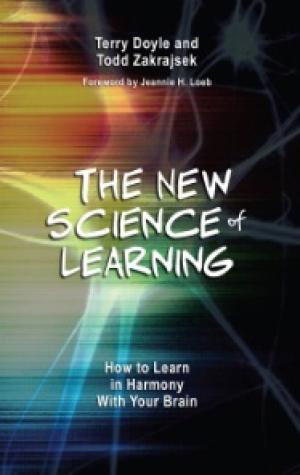
This book is meant to be put into someone’s hands in the months before they begin college, but it also serves as a useful tool for anyone contemplating returning to school after time away – adults getting ready to begin seminary, for example, after years in first or second careers – or for anyone wishing to become a “life-long learner,” whether in formal academic circles or in private life. Written in accessible language and peppered with illustrative examples, this slim volume blends common sense – such as eat a healthy, balanced diet, make time for regular exercise, get enough sleep, don’t cram – with a wide array of insights from neuroscience research and learning theory of the last fifteen years. Both authors have extensive experience and publications focused on the integration of cognitive research, biology, and learner-centered teaching: Doyle at Ferris State University and Zakrajsek in the Department of Family Medicine at UNC-Chapel Hill. The topics covered in the eight main chapters focus on learning and: sleep, exercise, the use of multiple senses, discovering and utilizing patterns, memory, “fixed” versus “growth” mindsets, and paying attention. Each chapter quickly sets forth recent pertinent research, then concludes with five to ten summary points. Much of the material in the early chapters confirms common sense: getting enough sleep and exercising regularly are necessary for both learning and memory. The brain needs “down” time to process new information. Because sleep and exercise are so foundational for learning, these topics pop up repeatedly in subsequent chapters, especially in the discussions of memory and paying attention. The discussions in chapters 4 through 8 take up facets of cognitive and learning research that move beyond common sense. Where two or more senses are put to use both learning and memory increase: for example, listening and reading, or reading aloud, or sight and touch. Even studying near the scent of roses has a positive impact. Elaboration is another key: the more routes one takes to the goal – such as via concept maps or annotating the pages of books – the stronger the learning. One chapter describes many ways of discerning patterns and “chunking” blocks of information to help make learning easier and faster. The chapter on memory reminds us that cramming is not nearly as effective as “distributed practice,” processing material in smaller bites over a longer period of time, which gives the brain time – it needs at least an hour – to do its work. This means that taking classes back-to-back, with little or no break in between, is nearly always a bad idea, especially in regard to the material in the first class. Resting between classes or learning activities, as well as taking short naps and breaks, daydreaming, or going for a walk or run, turn out to be essential for effective learning. Many students are told in elementary school how smart they are, as if learning is a fixed attribute, rather than being praised for the hard work they are doing, which affirms their learning as a process of steady “growth.” As a result, they often have difficult transitions in middle school and beyond, where the material demands more and more effort. Long-term success is a result of steady work and effective learning strategies, not intelligence. The New Science of Learning’s extensive use of citations provides lots of trails to follow if the reader is inclined to go deeper, but also makes the book choppier and less engaging than if the authors had rephrased the information in their own words. But this is a minor quibble. I plan to give a copy of this book to my son, who will start college next year, as well as my daughter, a high school sophomore, mostly because I learned so much about how to learn that I wish I had known long ago.
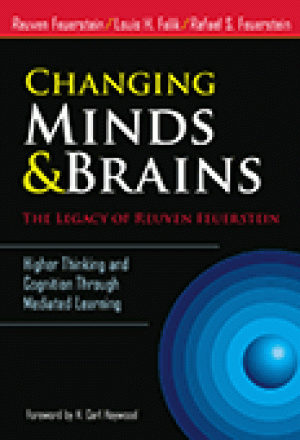
Until his death at ninety-three in 2014, Reuven Feuerstein was a leader in the fields of cognitive development, cognitive assessment, and education. His theory of Structural Cognitive Modifiability through the application of mediated learning experience (MLE) is widely applied in the context of educational and personal remediation for children and adolescents (but also adults) with deep learning disabilities as well as those with cognitive and affective impairments. “Much of Feuerstein’s professional life was spent – working with children and youth who were culturally different or culturally deprived – in Feuerstein’s own terms. These clinical experiences led him to focus on the developmental consequences of sociocultural disadvantage and atypical development” (xiii). The essays in this book were chosen to reveal the evolution of the theory of mediated learning as developed by Reuven Feuerstein. The objectives of the book, according to the editors, are to expose readers to the writings of Feuerstein, to show the organic nature of the theory he developed and its implications for humankind, and to highlight the influence of Judaic culture in the formation and development of the theory (xxiii). MLE is defined as “the interposition out of initiated, intelligent, goal-oriented individuals who interpose themselves between the world of stimuli impinging on the [learner] and interpret what one is supposed to see; not only this, but the mediator must be interested in and concerned with certain elements that the [learner] has to learn” (5). The goal of mediated learning is change, primarily change in the ways in which individuals approach learning and problem-solving situations (xiii). Feuerstein claims there are two main theories that explain the modalities by which individuals learn and develop; one is through direct exposure where no awareness and consciousness is needed, primarily emphasized by behaviorists, and the second, postulated by Piaget, conceives learning as a sole product of the maturational process which makes the interaction with stimuli possible, according to the age and the maturational level of the brain. Feuerstein did not think these two theoretical perspectives really explained the way human intelligence develops. He proposed a third way, which requires the function of the human mediator, hence, his theory of Mediated Learning Experiences (19). The majority of the book reviews the theory and methodology of MLE in great detail and deep explication. Chapters 1 through 8 will be of interest to those desiring to understand the theory and practice of MLE and its application to situations of remediation and work with particular populations. Chapter 1 reviews the development of the concept of modifiability and how MLE’s foundational concept differs from Piaget’s theory of cognitive development and its assumptions. Chapter 2 describes the universal parameters and relevance of MLE and addresses why many do not receive adequate mediation. An important treatment in this chapter is Feuerstein’s differentiation between cultural differences and cultural deprivation in terms of the theory and its application. Chapters 3 to 5 review MLE in greater depth, considering its application in education and other contexts, and review the concepts of the nature of change, behavior, and structural cognition related to mediated learning. Chapter 5 reviews more contemporary and emerging sources in behavioral and scientific fields that support and validate the theory and practice of MLE. The later chapters of the book are of more specific relevance and interest to the readers of this journal. Chapter 6 describes Feuerstein’s search, in his later years, for the genesis and the development of spirituality (morality, ethics, religious belief) in the material and structural aspects of role development and cognition. Chapter 9 provides a very helpful review of how three pedagogies of questioning – Socratic dialogue, collaborative learning, and Talmudic pedagogy – are applied to mediated learning. Chapter 10 brings MLB into the modern context of digital communication and rapidly available information through technology. It provides a very challenging and articulate treatment of the implications of the changing nature of epistemology and pedagogy in the digital age. While MLE tends to be a pedagogy applied to remediation with particular populations, understanding its theoretical basis for understanding cognition is of great value to any educator. In this volume, the later chapters reviewing cognition and spirituality and pedagogy related to the epistemology and cognition in the digital age are well worth reading.